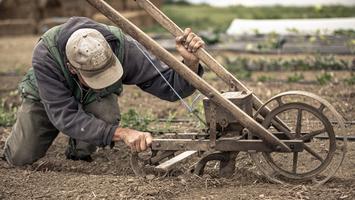
Until recently, the Heartland’s immigrant legacy lay largely obscured — displaced urban ethnic enclaves, abandoned synagogues and discarded German-language newspapers.
Yet in those mementos lies a tale relevant once again today as the foreign-born once again are re-shaping the region.
Immigrants were a critical part of the Heartland’s story. Starting in the 1830s, German immigrants were critical to the development of Missouri, particularly St. Louis, and residues of German culture remain in cities like Columbus, Cincinnati and Milwaukee. In 1880, nearly half of all children in St. Louis were of German descent, while another 28 percent were from other European countries. As late as 1900, one in five residents was foreign-born and another forty percent were children of immigrants. By 1940, half of Cleveland’s population was foreign-born, and another 30 percent were their offspring.
These newcomers — followed by those from Italy, Poland, Russia and the Middle East — staffed the great factories and shaped the neighborhoods of the Heartland’s urban centers, most famously Chicago. Touring the Midwest in the mid-1940s, John Gunther described the Midwest as the epicenter of the “American melting pot,” a place that needed lots of brawn and brainpower to develop.
Yet this was far more than just an urban phenomenon. Half of North Dakota’s farmers in 1910 were foreign-born, the bulk from Scandinavia, Germany, Russia and Canada; they were perhaps prepared to cope with harsh weather, settle the wind-swept prairie and build a society there.
Immigration soon declined, partly because the parts of the world that had supplied workers no longer sent many after 1950. Today there’s only minimal immigration from places like Sweden, Germany, Ireland and Italy; overall European immigrants account for barely 11 percent of all newcomers, compared to 75 percent in 1960. Among the region’s big metropolitan areas, only Detroit and Chicago have European immigrant populations above.
Read the rest of this piece at Heartland Forward.
Download the full report here (PDF).
Joel Kotkin is the author of The Coming of Neo-Feudalism: A Warning to the Global Middle Class. He is the Presidential Fellow in Urban Futures at Chapman University and Executive Director for Urban Reform Institute. Learn more at joelkotkin.com and follow him on Twitter @joelkotkin.
Alicia Kurimska is a research associate at Chapman University's Center for Demographics and Policy and the Urban Reform Institute. She is the co-author with Anne Snyder of The Millennial Dilemma: A Generation Searches for Home...On Their Terms. She writes for NewGeography.com and City Journal.
Photo credit: courtesy Heartland Forward













Quakers
The book Albion's Seed seems very relevant here. The immigrants the authors mention--Germans, Scandinavians, Catholics, Jews--began arriving during colonial times upon invitation by the Quakers. Subsequent waves of such immigrants have settled in Quaker parts of the country, notably Ohio, Indiana, Illinois, Missouri, and the northern Plains.